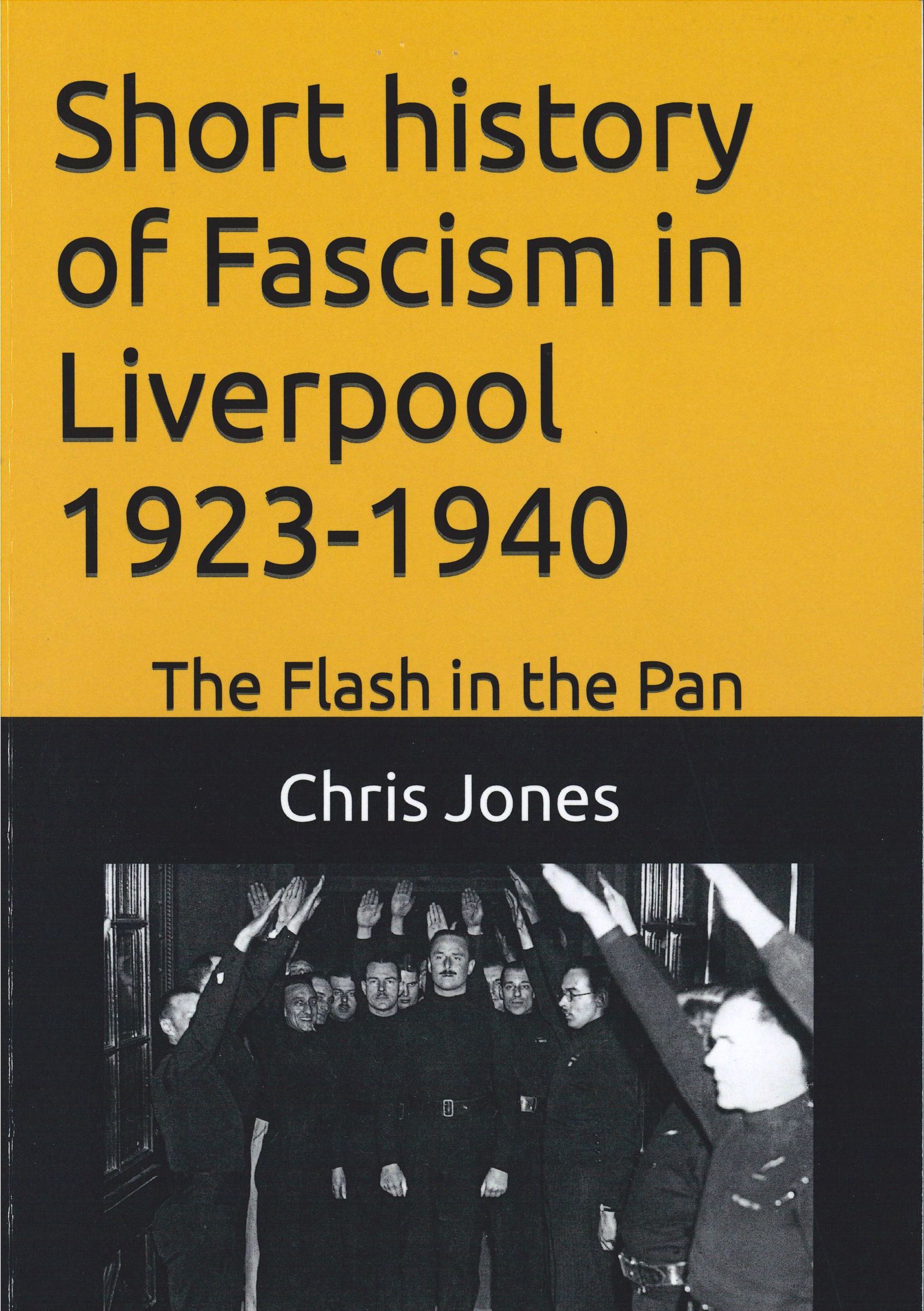
Steve Silver reviews The Flash in the Pan (originally published in the Winter 2023/24 issue of Searchlight magazine)
Merseyside historian Chris Jones has done the anti-fascist movement a great service in bringing out this concise history of the fascist movement in Liverpool. Flash in the Pan, which gets its name from what anti-fascists dubbed the British Union of Fascists logo – a lightning flash in a circle – draws out some interesting little-known local information about the period.
The Battle of Lime Street
Searchlight readers will be very familiar with the Battle of Cable Street, when the fascists were routed in the East End of London on October 4 1936. Not many will be aware that exactly one week later, on October 11, a mass meeting that was due to be held in Liverpool by the British Union of Fascists, to be addressed by its leader Sir Oswald Mosley, ended in fierce fighting that made national news.
The meeting was due to take place in a boxing stadium in the City Centre with uniformed Blackshirts marching in a column from their nearby offices. Spurred on by the events in London just a week earlier over 1000 anti-fascists clashed with the police and faced baton charges as they attempted to reroute the fascist march.
In the end the meeting did go ahead with Mosley addressing a hall that was only one third full but the whole event was overshadowed by the violence.
A dozen men appeared in court. One 61 year old anti-fascist labourer, Thomas Kennedy, received a sentence of two month’s hard labour for bringing a sword to the protest.
Typically, Mosley blamed the Jews and the communists for organising the opposition and violence. However, while one prominent communist from nearby Bootle, Owen Kelly, was one of the defendants it was clear that the people who turned out on the day came from broader sections of the community than the small Communist Party or local Jewish community.
Fascists, Communists and kidnapping
As would be expected much of the book relates to the anti-fascist politics of the 1930s where the main opposition to the fascists came from the Communist Party.
The author uncovers a particularly fascinating episode that goes back to a decade before the Battles of Cable Street and Lime Street to 1925 and the very early days of fascism – the British Fascisti – some seven years before the BUF was formed.
In April of 1925 members of the British Fascisti kidnapped the Communist Party general secretary, Harry Pollitt, forcibly removing him from a train at Lime Street Station and then spiriting him away to Wales. The episode was even discussed in Parliament and the press where it was portrayed as comedic, few at this point taking the dangers of fascism seriously. Subsequently, the 5 fascists who stood trial argued that the episode was a prank and astonishingly a ‘not guilty’ verdict was carried.
Mosley Hospitalised
In October 1937 – almost exactly a year after the Lime Street debacle – Mosley returned to Liverpool. In the aftermath of Cable Street political uniforms had been banned so the BUF members could no longer wear their black shirts and rather than using a grand hall Mosley was due to speak on open waste ground.
As Mosley mounted the makeshift stage on top of a van with a loudspeaker he could see he was facing a hostile crowd. One woman shouted “You killed my man in Spain! Down with the bastards!” referring to the Spanish Civil War that was raging at the time in which anti-fascists from across Merseyside had volunteered to fight in defence of the republic.
Just as Mosley came to the microphone a hail of stones rained down on the platform, one of which struck him on the head, marking the end of meeting. Mosley was taken to Walton hospital and kept there for observation. The story of the humiliation stayed with the Merseyside fascists for some considerable time and further local meetings were frequently disrupted by anti-fascists.
A flash in the pan
Jones’ book shows that in the end the pre-war fascist movement did turn out be a ‘flash in the pan’. With leading fascists interned as potential enemy agents by 1940, as Britain fought an anti-fascist war against Nazi Germany, it would be some years before they could even attempt to recover any ground.
Merseyside and the rest of Britain was lucky though. Europe’s fascists seemed no less ridiculous than their British counterparts in the early days, yet they consolidated power and brought misery to the continent.
The historiography of pre-war British fascism – and anti-fascism – is skewed towards London and its East End where much of the fascists’ own activities were directed. However, they sought to be a national movement and were active across Britain. This book provides a fascinating and useful insight into the fascist movement in Liverpool and into those who given half the chance would have had all of Britain quaking under the jackboot.
Short history of Fascism in Liverpool 1923-1940: The Flash in the Pan by Chris Jones is available for £5 from News from Nowhere Books, 96 Bold Street, Liverpool, L1 4HY www.newsfromnowhere.co.uk or from www.amazon.co.uk

Have read the book a great insight to Merseyside fascist & the battle to bring it down,a worthy read especially for a fiver.well done Chris Jones your dad would be so proud of you.